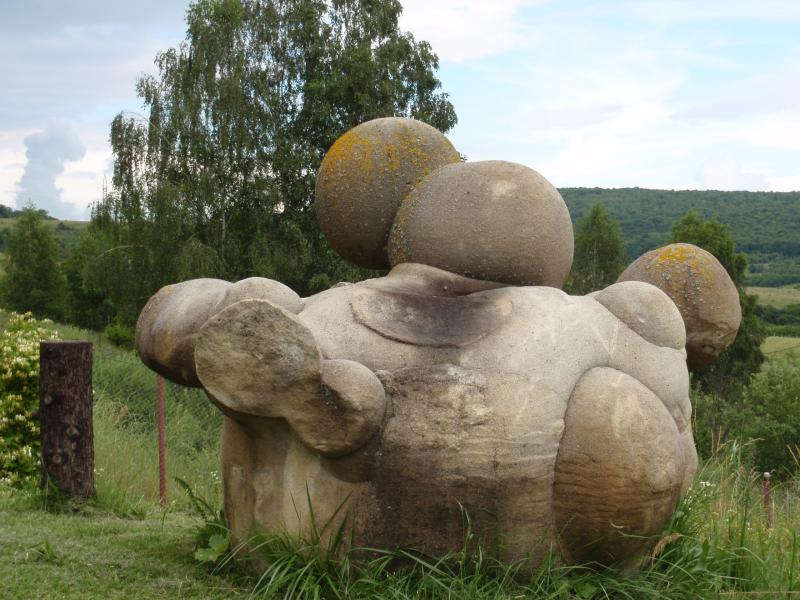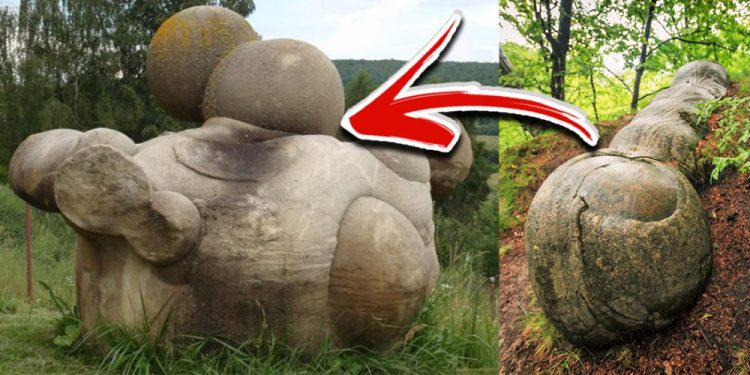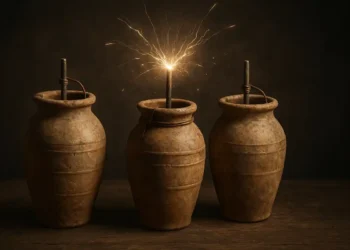There are strange places across the world. But these places make our planet such a wonderful and unique place. Among its many oddities and beauties, Earth has living stones. Although not alive, there are geological features in Europe that have the ability to grow and move. It’s a natural phenomenon, and the most famous examples are located in Romania. Located in the town of Costesti, these odd rocks are dubbed living stones but are locally known as Trovants. These strange, extraordinary, weird rocks seem almost out of a Hollywood movie; they can grow and multiply and essentially move.
The Living Stones aka Trovants
Trovants—living stones—are made out of a stone core, but their outer layers are made out of a kind of sand, which forms around the inner core, acting as a shell. It’s their outer shell that causes the stones to grow essentially. Their name derives from the German words Sandstein Konkretion, which means sandstone concretion or cemented sand. These stones can grow to a few millimeters but as large as ten meters in diameter. Because of their ability to “grow,” these geological weirdos are dubbed the living stones, although different people call them by different names. In Romania, the stones are called Trovants, a term coined by naturalist Gh. M. Murgoci, in his work “The Tertiary in Oltenia,” where he refers to the odd geological features. Since they are so unusual, people visit Romania to see them.
You can take a Trovant, place it in your garden, and see it grow. After rainfall, the trovants are thought to begin growing and multiplying. How fast the rock grows is an enigma.

Trovants and their odd ability to multiply
But in addition to their odd ability to multiply, the stones can move. Don’t get me wrong; they don’t grow little feet and start running around. There’s a logical explanation for that. As I’ve mentioned in previous articles, the “living Stones” are made by “highly-porous sand accumulations and sandstone deposits that are cemented by waters rich in calcium carbonate.” Because of this, every time it rains, the outer shell of the stones absorbs the minerals from the rain. The rainwater, together with certain chemicals and minerals already inside the trovants, creates a reaction exerting pressure on their interior. This pressure, which accumulates, makes the stone grow from the center outwards, making it look like the stones multiply and move.
In other words, for the Trovants to form, water rich in calcium carbonate is essential. The stones appear in edgeless shapes; they are cylindrical, nodular, and almost spherical. Nonetheless, various Trovants develop odd shapes caused by their irregular accretion, precisely the reason why there are so many different Trovants in size and shape. It is also said that some Trovants actually row root-like extensions and even have “aging rings” similar to trees in their interior. Romania’s living stones are so popular you can find them in the so-called “Trovants Museum” Natural Reserve in the Costeşti village. Although the most popular examples are in Romania, “living stones” have existed for a long time in different parts of the world. Similar “geological” features have already been revealed in countries such as the Czech Republic, and even Russia, but no doubt that similar examples exist all over the world.
Facts About Trovants
Resumed, here are eight things you should know about them:
The Living Stones are real. Although the most popular are in Romania, similar geological features have been found worldwide. Trovants can grow in size from a few millimeters to a few meters in size. Trovants are not uniform; they come in different shapes and sizes. Some weigh no more than a few grams, while other examples weigh several tons. The “living stones” are made by “highly-porous sand accumulations and sandstone deposits. Some have calculated that Trovants grow 4.5 centimeters a year; however, no scientific study has confirmed their exact growth rate. The Romanian Trovants need rainwater to grow. Every time it rains, the outer shell absorbs the minerals from the rain, causing the Trovant to “grow.”
Join the discussion and participate in awesome giveaways in our mobile Telegram group. Join Curiosmos on Telegram Today. t.me/Curiosmos











